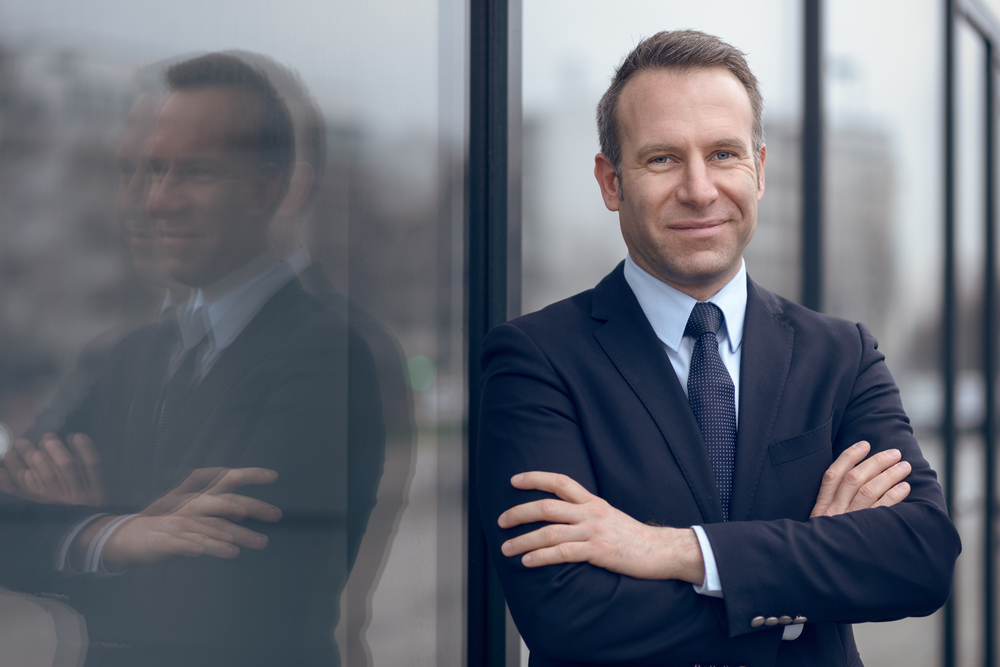In this guide, we’ll delve into the pros and cons of tactical vs strategic asset allocation approaches. With this information, you’ll be better prepared to anticipate client mindsets and educate them about differences between each approach.
Continue readingOutsourced Investment Solutions For Financial Advisor Growth
Outsourced Investment Solutions in the complex world of financial advising, are gaining traction as Outsourced Chief Investment Officer (OCIO) Solutions. These services offer a strategic approach to investment consulting and asset management.
For planning-focused financial advisors looking to grow, understanding these solutions can be a game-changer.
Understanding Outsourced Investment Solutions
Outsourced Chief Investment Officer (OCIO) Solutions refer to the practice of delegating investment functions to external firms. These specialized OCIO firms possess deep expertise in portfolio construction, manager due diligence, and investment analysis. The goal is to streamline the investment process. This is achieved by leveraging the knowledge and resources of these external experts.
Outsourcing can cover a range of services. These include strategic asset allocation, portfolio construction, risk management, and reporting. By understanding the role and benefits of outsourced investment solutions, planning-focused advisors can make informed decisions. This can lead to improved financial outcomes and growth.
The Rise of Outsourced Investment Solutions
In recent years, the trend of outsourcing investment functions has gained momentum. This is driven by the increasing complexity of financial markets and the need for specialized expertise.
Outsourced Investment Solutions allows financial advisor companies to focus on their core competencies and frees up resources that can be redirected towards strategic growth initiatives. Most of our clients here at East Bay really prefer to focus on the planning aspect of advising while we handle the heavy-lift of investment management.
Overall we believe the rise of outsourcing in investment management reflects a strategic shift. Firms are recognizing the hard and soft values of external expertise in navigating the complexities of the investment landscape.
Key Benefits of Outsourced Investment Solutions or Outsourced Chief Investment Officer (OCIO) Solutions
Outsourced investment solutions offer numerous benefits, which can significantly contribute to company growth and financial success.
Firstly, they provide access to specialized expertise. Outsourced firms have dedicated teams of investment professionals who possess deep market knowledge. This expertise can enhance investment decision-making and potentially improve portfolio performance.
Secondly, outsourcing can lead to cost savings. By leveraging the economies of scale of outsourced firms, companies can reduce their operational costs. This can free up resources for other strategic initiatives.
Thirdly, outsourced solutions offer flexibility and customization. They can tailor their services to the specific needs and objectives of each client. This personalized approach can lead to more effective investment strategies.
Moreover, outsourced firms provide continuous monitoring and rebalancing of investment portfolios. This proactive management can help to mitigate risks and optimize returns.

The benefits of Outsourced Investment Solutions include:
- Access to specialized expertise
- Cost savings
- Flexibility and customization
- Continuous portfolio monitoring and rebalancing
In conclusion, Outsourced Chief Investment Officer (OCIO) Solutions can provide significant value. They can enhance investment performance, reduce costs, and offer personalized services. By leveraging these benefits, companies can achieve their financial goals and drive growth.
How Outsourced Chief Investment Officer (OCIO) Solutions Enhance Asset Management
Outsourced investment solutions can significantly enhance asset management. They bring a level of expertise and resources that may be difficult to match in-house.
These firms have access to advanced technology and data analytics. This allows them to conduct thorough market research and make informed investment decisions. It also enables them to monitor portfolios continuously and make adjustments as needed.
Outsourced solutions also provide access to a broader range of investment opportunities. They can tap into global markets and alternative investments that may not be readily accessible to individual investors or smaller firms.
In essence, outsourced investment solutions can streamline asset management. They can provide the tools, expertise, and opportunities needed to optimize portfolio performance and achieve financial goals.
The Importance of Manager Due Diligence in Outsourcing
When outsourcing investment functions, due diligence is crucial. It’s not just about selecting a provider, but choosing the right partner for your financial journey.
This involves evaluating the track record and credibility of potential providers. It’s important to look at their past performance, investment strategies, and client testimonials. This can provide insights into their ability to deliver on their promises.
Due diligence also involves understanding the provider’s operational infrastructure. This includes their technology, data analytics capabilities, and risk management systems. It’s essential to ensure they have the resources to effectively manage your investments.
In conclusion, due diligence is a critical step in the outsourcing process. It helps ensure that you partner with a reliable and competent investment manager who can help you achieve your financial goals.

Cost-Benefit Analysis: In-House vs. Outsourced Chief Investment Officer (OCIO) Solutions
When considering Outsourced Chief Investment Officer (OCIO) Solutions, a cost-benefit analysis is essential. This involves comparing the costs and benefits of managing investments in-house versus outsourcing.
In-house management may seem cost-effective initially. However, it requires significant resources, including hiring and training investment professionals, purchasing technology, and maintaining compliance systems. These costs can add up quickly.
On the other hand, outsourcing allows companies to leverage the expertise and resources of specialized firms. This can lead to improved investment performance and efficiency. Additionally, outsourcing can provide access to a broader range of investment opportunities, which may not be available in-house.
At East Bay Specifically, we are proud of the fact (and our clients love) that our fees do not grow as your AUM grows. While some TAMPs and other OCIOs may charge
Case Studies: Success Stories of Outsourced Chief Investment Officer (OCIO) Solutions
To illustrate the benefits of outsourced investment solutions, let’s consider a few case studies. These examples demonstrate how outsourcing can lead to company growth and improved financial performance.
One example is a mid-sized financial planning firm that outsourced its investment management to a Outsourced Chief Investment Officer (OCIO) firm. This decision allowed the financial planning firm to focus on its core business, while the outsourced firm managed its investments. As a result, the company saw improved investment performance and significant cost savings.
Another case involves a retiree who outsourced the management of their retirement funds. With the help of a professional investment firm, they were able to navigate complex financial markets and make informed investment decisions. This led to increased financial security and peace of mind in retirement.
These case studies highlight the potential benefits of outsourced investment solutions. They show how outsourcing can lead to improved investment performance, cost savings, and financial security.
Selecting the Right Outsourced Chief Investment Officer (OCIO) Solutions Partner
Choosing the right Outsourced Chief Investment Officer (OCIO) Solutions partner is a critical decision. It requires careful consideration and due diligence. The right partner can help you achieve your financial goals, while the wrong one can lead to financial setbacks.
Firstly, consider the firm’s track record and credibility. Look for a firm with a proven history of delivering strong investment performance. Also, consider the firm’s reputation in the industry and its financial stability.
Secondly, assess the firm’s investment philosophy and approach. Ensure it aligns with your financial goals and risk tolerance. The firm should offer a tailored approach to investment solutions, taking into account your unique needs and circumstances.
Lastly, consider the firm’s communication and reporting practices. Clear and regular communication is crucial in an outsourced relationship. The firm should provide transparent reporting on investment performance and fees.
The Future Outlook of Outsourced Investment Solutions
The future of outsourced investment solutions looks promising. The trend towards outsourcing investment functions is expected to continue, driven by the increasing complexity of financial markets and the growing demand for specialized expertise.
Technological advancements will also play a significant role. They will enhance the delivery of outsourced investment services, enabling firms to provide more sophisticated and personalized solutions.
In conclusion, as the financial landscape continues to evolve, outsourced investment solutions will remain a vital tool for individuals and companies seeking to optimize their investment strategies and achieve their financial goals.
Conclusion: Aligning Outsourced Chief Investment Officer (OCIO) Solutions with Your Financial Planning Firm’s Goals
Outsourced Chief Investment Officer (OCIO) Solutions offer a strategic approach to achieving your financial goals. Whether you’re an aspiring investor, a mid-career professional, or a retiree, these services can be tailored to your unique needs and objectives.
By leveraging the expertise of investment professionals, you can navigate complex financial markets, manage risk, and optimize your portfolio’s performance. This allows you to focus on your financial planning firm’s progression, knowing your clients’ investments are in capable hands.
In the end, the key to successful outsourcing lies in finding a trusted partner who understands your financial goals and aligns their services accordingly. This partnership can pave the way for financial security and freedom.
Connect with us at East Bay Investment Solutions. Follow us here on LinkedIn.
Contact one of our experts are on hand to discuss your specific needs and how we can help you achieve the potential benefits of Outsourced Chief Investment Officer (OCIO) Solutions.
Alternatively, schedule a time to talk to us via a complimentary Web Conferencing call
5 Ways To Reduce Costs Using Outsourced CIO Solutions
Outsourced CIO Solutions 5 Ways To Reduce Costs Using
In the complex world of investment management, cost reduction is a critical goal. Yet, achieving it without compromising performance can be a challenge.
Enter Outsourced Chief Investment Officer (OCIO) Solutions. These services offer a strategic approach to managing investments while reducing costs.
This article will explore five ways in which Outsourced Chief Investment Officer (OCIO) Solutions can help financial advisors optimize their investment strategies and financial planning services. We’ll delve into the benefits, implementation, and the potential for cost savings.

Understanding Outsourced Chief Investment Officer (OCIO) Solutions
Outsourced CIO solutions refer to services provided by external Chief Investment Officers. These professionals offer strategic oversight of investment portfolios, replacing the need for an in-house CIO.
The role of an outsourced CIO extends beyond mere advisory. They actively manage investments, conduct due diligence, navigate regulatory environments, and provide customized reporting. At East Bay Investment Solutions, we even go as far as to provide a resource library for our clients to use with (and for the benefit of) their clients as well as a monthly and quarterly market update to white label or use for their own education. As the market evolves, outsourced CIO providers must continuously adapt and innovate to meet their clients’ changing needs. This involves staying updated on market trends, regulatory changes, and technological advancements, while also fostering a culture of continuous learning and professional development.
1. Eliminating the Need for In-House CIO Salaries
One of the most immediate benefits of outsourced CIO solutions is the elimination of in-house CIO salaries. Hiring a full-time, in-house CIO can be a significant expense for financial advisors, especially smaller ones.
By outsourcing, you only pay for the services you need. This flexibility can lead to substantial cost savings, freeing up resources for other strategic initiatives.
2. Accessing Superior Investment Strategies and Technologies
Outsourced CIO solutions provide access to superior investment strategies and technologies. These professionals bring a wealth of experience and expertise, often surpassing what an in-house team could offer.
Moreover, they leverage the latest technology and analytics tools, enhancing investment performance. This access to advanced resources, without the need for direct investment, is another way outsourced CIO services contribute to cost reduction.
3. Streamlining Due Diligence and Risk Management
Outsourced CIOs play a crucial role in streamlining due diligence and risk management processes. They conduct thorough assessments of potential investments, ensuring they align with the advisor’s client’s risk tolerance and investment objectives.
By mitigating operational risks and enhancing due diligence, outsourced CIO solutions can significantly reduce costs associated with poor investment decisions and regulatory non-compliance.
4. Achieving Scalability and Flexibility
Outsourced Chief Investment Officer (OCIO) Solutions offer scalability and flexibility that can be tailored to fit different needs. This adaptability allows for cost-effective management of investment portfolios, regardless of their size or complexity.
Moreover, outsourced CIOs can swiftly adapt to changing market conditions. This agility not only ensures optimal investment performance but also contributes to significant cost savings by avoiding potential financial pitfalls.

5. Leveraging Customized Reporting and Performance Analysis
Outsourced CIO solutions often include customized reporting and performance analysis. This feature provides Financial Advisors with valuable insights into their investment portfolios. It also eliminates the need for costly internal analytics tools and expertise.These reports can help financial advisors make informed investment decisions.
Start reducing costs today in your organization by connecting with us at East Bay. Our experts are on hand to discuss your specific needs and how we can help you achieve the potential benefits of outsourced CIO services. Connect with us on LinkedIn, contact us via our website or take the quiz to get started.
Outsourced CIO Services – Why Financial Advisors Are Moving towards Outsourcing
Outsourced CIO Services – Why Financial Advisors Are Moving towards Outsourcing Their Chief Investment Officer
Outsourced CIO Services are growing and the financial advisor landscape is evolving. One significant shift is in learning that planning-focused advisors have access to Outsourced Chief Investment Officer (CIO) services.
This move is not without reason and the financial advisors we work with have learned first hand the benefits of working with an outsourced CIO services partner. These benefits range from cost savings to expanded investor access to investments and specialized expertise. They also include enhanced strategic focus, time savings, an elevated client experience, and most importantly, more control and enjoyment in their own planning-focused roles.
However, the decision to outsource the CIO function is not without its complexities. It requires careful consideration and due diligence. This article aims to shed light on this trend. It will explore why Financial Advisors are moving towards outsourcing their CIO and the implications of this shift.
The Evolving Role of the Chief Investment Officer
The role of the Chief Investment Officer has undergone significant changes over the years. Traditionally, the CIO was an in-house position, responsible for managing a financial advisor’s investment portfolio.
However, the increasing complexity of financial markets and the need for specialized expertise have led to the evolution of the CIO role. Today, more financial advisors are opting to outsource this function, leveraging the skills and knowledge of external experts to enhance their ability to focus on planning and grow their business.
Drivers for Outsourced Chief Investment Officer (OCIO) Solutions
Several factors are driving financial advisors towards outsourcing the CIO function. One of the primary drivers is cost efficiency. By outsourcing, financial advisors can access high-level investment expertise without the overhead costs associated with a full-time, in-house CIO.
Another driver is the need for specialized knowledge and skills. The financial landscape is becoming increasingly complex, requiring a deep understanding of various asset classes, risk management strategies, and regulatory changes. Outsourced CIOs, with their broad exposure to different markets and investment strategies, are well-positioned to navigate this complexity and deliver what your clients need when they need it.
Advantages of Outsourced Chief Investment Officer (OCIO) Solutions
The outsourced CIO services offer several advantages. One of the most significant benefits is access to a broader range of investment opportunities. Outsourced CIOs often have extensive networks and deep market knowledge, enabling them to identify and capitalize on investment opportunities that may not be readily apparent to in-house teams.
Another advantage is the ability to focus on core business activities. By outsourcing the CIO function, financial advisors can concentrate on their primary business operations, leaving the complex task of investment management to the experts.
The benefits of outsourced CIO services include:
- Access to specialized expertise and broader investment opportunities
- Cost savings through reduced overhead expenses
- Enhanced focus on core business activities
- Greater flexibility and scalability to accommodate organizational growth and change
- Access to advanced technology and data analytics capabilities
- Enhanced risk management and compliance capabilities
How Outsourced Chief Investment Officer (OCIO) Solutions Can Enhance Investment Performance
Outsourced CIOs can significantly increase the potential for success when it comes to investment performance. They bring a wealth of experience and expertise, coupled with sophisticated investment tools and analytics, to make informed investment decisions. This professional management can lead to improved portfolio performance and risk-adjusted returns.
Moreover, outsourced CIOs can provide a fresh perspective on investment strategies. They can identify new opportunities and trends in the market, helping financial advisors stay ahead of the curve. This proactive approach to investment management can lead to superior investment outcomes, contributing to the overall financial success of the clients and the firm.

Selecting the Right Outsourced CIO Provider
Choosing the right outsourced CIO provider is a critical decision for financial advisors. It requires careful due diligence and evaluation of potential providers’ expertise, track record, and alignment with the financial advisor’s investment objectives. The selection process should also consider the provider’s approach to risk management, compliance, and transparency. You want to be sure your OCIO’s investment philosophy aligns with your own for optimal success in the business relationship.
Moreover, cultural fit and shared values are important considerations. The outsourced CIO should be able to work seamlessly with the financial advisor’s team, understand its unique needs, and contribute to its strategic vision. A successful outsourced CIO engagement is built on mutual trust, collaboration, and shared commitment to achieving the financial advisor’s financial goals.
Case Studies: Success Stories of Outsourced CIOs
There are numerous success stories of financial advisors benefiting from outsourced CIO services. For instance, small to mid-sized firms have been able to access high-quality investment management, previously only available to larger entities, through outsourcing. These financial advisors have often seen improved portfolio performance and risk management, demonstrating the value of outsourced expertise.
The Future Outlook for Outsourced Chief Investment Officer (OCIO) Solutions
The demand for outsourced CIO services is expected to grow in the coming years. This growth is driven by the increasing complexity of the investment landscape, the need for specialized expertise, and the desire for cost-effective investment management solutions.
As the market evolves, outsourced CIO providers will need to continuously adapt and innovate to meet the changing needs of their clients. This includes staying abreast of market trends, regulatory changes, and technological advancements, as well as fostering a culture of continuous learning and professional development.
Ready to move to an Outsourced CIO?
Connect with us at East Bay Financial Services on LinkedIn or via our contact us via our website. Our experts are on hand to discuss your specific needs and how we can help you achieve the potential benefits of outsourced CIO services.Continue reading
How Can an OCIO Benefit Your Financial Planning Business?
4 Benefits of Hiring an OCIO
Continue readingBenefits Of Hiring An OCIO For Financial Advisors
The Benefits Of Hiring An OCIO For Financial Advisors
Nowadays, trust has become crucial in the financial advisory industry. Clients depend on advisors to take care of their funds and give them reliable financial guidance. Outsourced Chief Investment Officers (OCIOs) partner with advisors to set the standard for outstanding financial advice. Together with utilizing the unique skills and resources that OCIOs provide, this partnership attempts to help clients succeed. Advisors can transform their practices by working with an OCIO, as the following blog demonstrates.
In addition to basic investment guidance, clients expect more. They are looking for a complete solution, including managing risks, portfolio monitoring, and smart investment. OCIOs are excellent in these areas. Advisors can stand out in a highly competitive industry, boost their abilities, and satisfy clients by teaming up with an OCIO. However, it goes beyond just strengthening the abilities.
Working together with an OCIO makes sure that everyone is contributing toward the same goals, promotes creativity, and keeps things interesting. It’s similar to having a powerful squad prepared to face any financial challenge. In this blog, we will be exploring the benefits of hiring an OCIO for financial advisors that helps advisors navigate challenging markets, make better investing choices, and offer great client service.
What Is An OCIO?
Making choices regarding investments on behalf of clients is a major responsibility of an Outsourced Chief Investment Officer (OCIO). They manage various kinds of tasks, such as precise portfolio management and general governance oversight. Similar to the work that an internal Chief Investment Officer (CIO) and their subordinates would conduct within the organization, this involves tasks that include the allocation of assets, managing risks, and performance monitoring.
OCIOs undertake the role of fiduciaries, taking full accountability for their actions and making sure that investing decisions and strategies match the goals and preferences of the people they serve. The specific range of services and obligations are specified in agreements between clients and OCIOs, giving clients the power to choose what level of control they want to keep. Clients could take advantage of an OCIO’s expertise and facilities with this collaborative approach, which also ensures that the investments they make are being handled successfully and strategically.

Some Benefits of Hiring an OCIO:
Partnering with an Outsourced Chief Investment Officer (OCIO) offers transformative benefits for financial advisors, which are mentioned below:
1: Greater Experience and Resource Availability
Financial advisors have the benefit of a wealth of resources and experience when they work with an OCIO, which can greatly improve their advisory capabilities. By providing specific knowledge in asset allocation, handling risks, portfolio management, and performance monitoring, OCIOs ensure that investment plans are in line with the goals of clients and the fluctuations of the market. This depth of knowledge enables financial advisors to leverage advanced investment strategies, navigate market complexities, and optimize returns while mitigating risks effectively.
The additional benefits Of hiring an OCIO for financial advisors is that they use current technologies and statistical techniques to offer immediate analysis of developments in the market, opportunities, and potential dangers. Financial advisers can take advantage of new opportunities, proactively update investment plans, and make data-driven decisions by using these resources. Working together with an OCIO not only increases investment outcomes but also promotes an ongoing growth and strategy alignment culture inside the advising firm.
2: Improve Decision-Making Efficiency
Financial advisers gain immediate and helpful insights when they collaborate with an OCIO, which speeds up the process of making decisions. Everyday portfolio management is the primary responsibility of OCIOs, who additionally provide complete reporting, performance analytics, and market research. Financial advisors are able to assess portfolio performance against specified benchmarks, enhance asset allocations, and make well-informed recommendations thanks to this wealth of information.
Additionally, by offering strategic direction and assistance, OCIOs allow financial advisors to concentrate on higher-level strategic projects. Advisors can dedicate more time to value-added services, financial planning, and interaction with clients by assigning operational responsibilities to the OCIO. This successful division of duties improves the overall result, speeds up response times, and builds up customer relationships by providing expert guidance as well as personalized solutions.
3: Reduce Operational Expenses and Enhance Scalability
The hiring of an OCIO can result in financial advice practices that see notable cost savings and operational efficiencies. OCIOs operate as independent entities, eliminating the need for maintaining an in-house investment team and the related expenses that go along with it. Advisors can expand their client base and service options without sacrificing the quality of their services due to this simplified method, which also enhances scalability and lowers operating expenses.
In order to achieve the greatest returns on investment and optimize resource usage, OCIOs also make use of economies of scale and the latest techniques in investment management. Financial advisers can carefully allocate resources, invest in growth initiatives, and maintain their competitiveness in a dynamic market environment with this cost-effective strategy. Advisors can achieve client satisfaction, profitability, and sustainable growth by collaborating with an OCIO.
4: Fulfill Expansive Organizational Goals
When financial advisors work together with an OCIO, the benefits of hiring an OCIO for financial advisors can match investment strategies to the overall client’s objectives. OCIOs take a leading role in higher-level conversations in order to make sure that decisions on investments align with the goals, standards, and vision of the client. This alignment of strategies enhances organizational flexibility and adaptability, along with improving the success of investments.
Moreover, the strategic suggestions and insightful guidance provided by OCIOs encourage organizational expansion, diversity, and risk control. Financial advisers can successfully manage market crises, grab growth potential clients, and set up their businesses for long-term success using the experience of an OCIO. Innovation, alignment of strategy, and value creation are all promoted throughout the company by the collaborative relationship between financial advisers and OCIOs.
Conclusion
Innovation, efficiency, and perfection in investment management are made possible by the collaborative relationship between financial advisers and Outsourced Chief Investment Officers (OCIOs). Financial advisors can boost their advisory practices to new levels of success by utilizing the knowledge, resources, and participation of an OCIO. Hiring an OCIO has benefits that go beyond only financial gains; these include better decision-making, scalability, efficiency in operation, and strategic compatibility with the company’s goals.
Serving financial advisers nationally with a planning focus, East Bay Investment Solutions is an established provider of virtual services for Outsourced Chief Investment Officers (OCIOs). Our team of experts specializes in offering complete OCIO solutions that satisfy advisors’ constantly evolving needs. Delivering exceptional value, strategic directions, and outstanding operational performance to our clients is our top priority. Schedule a meeting with us today to explore how our OCIO solutions can empower you to deliver exceptional value, achieve sustainable growth, and elevate your financial advisory services to new heights.



